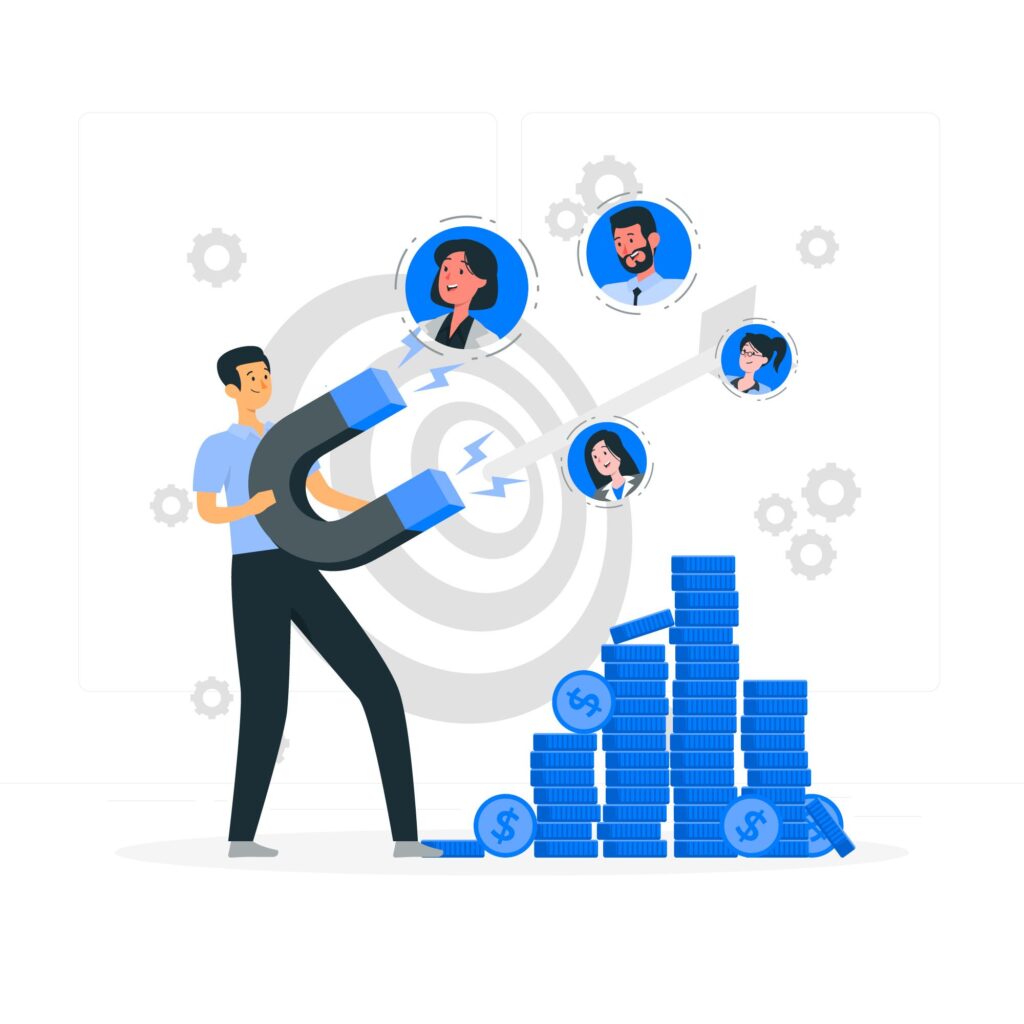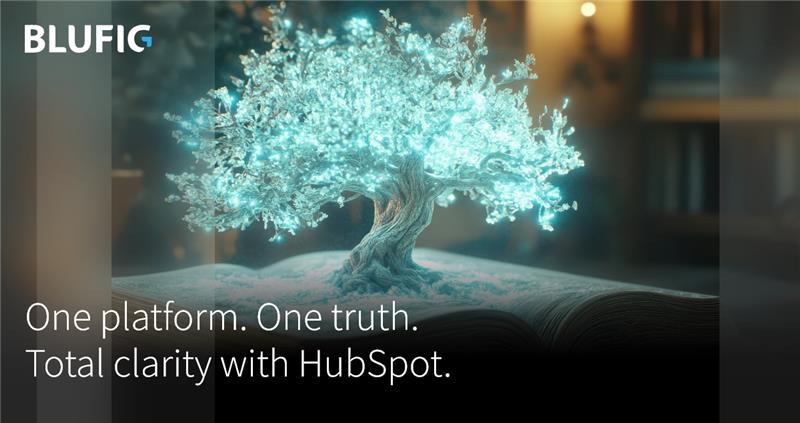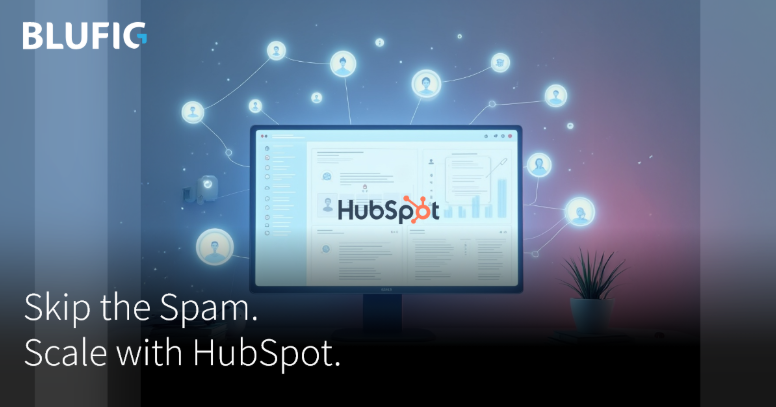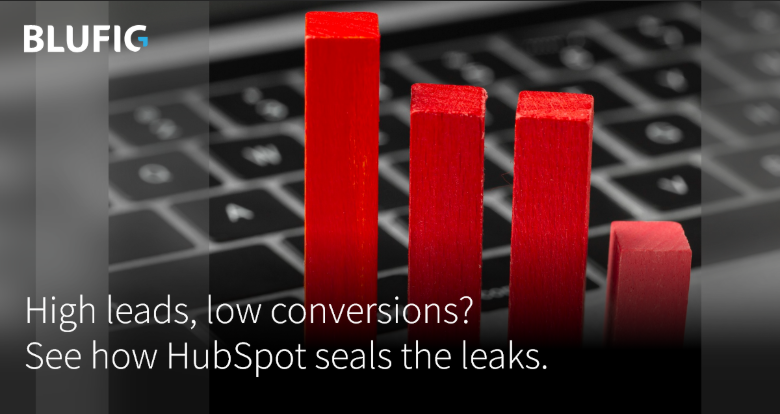If your pipeline looks full but revenue isn’t moving, you’re not alone. It’s one of the most frustrating positions for any marketer or sales leader—when the lead funnel is bursting at the seams, yet the conversion rate tells an entirely different story. You have the numbers. The MQLs are flowing in. But something’s not adding up.
Why do leads stall halfway through the journey? Why do sales teams keep saying, “These leads aren’t qualified”? And most importantly: How do you shift from collecting contacts to closing deals?
This blog will unpack the core issue of lead-to-customer disconnect, and how HubSpot, when implemented strategically, becomes more than just a CRM.
Turn your leads into deals with HubSpot’s help
Why Leads Don’t Equal Conversions
Imagine a luxury car showroom. People walk in, admire the design, ask a few questions, and leave. Some never intended to buy. Some wanted a test drive but didn’t follow up. Others weren’t even qualified to afford the car in the first place. Would you call that showroom successful just because of the footfall? Of course not.
Similarly, it’s also not a victory if your CRM is full of leads — in fact, it could be a sign of a problem. Let’s explore the most common reasons leads don’t convert:
- Poor Qualification: Not all leads are created equal. Some leads are better than others. Some are ready to buy. Others are just curious. But if the team kicks off its sales process treating every lead like a hot prospect, resources will be wasted and closing rates will suffer. A study performed by LinkedIn in 2023, showed that only 27% of B2B leads are truly sales-ready at the beginning of the funnel. If you don’t have a structured qualification framework – like HubSpot’s Lead Scoring method- you might misalign leads in the sales pipeline, wasting reps’ time going after low-intent contacts.
- No Follow-Up System: If you think it is ok to follow up the next day, think again. Harvard Business Review showed that companies who respond to leads in less than an hour are seven times more likely to qualify those leads than if they waited just two hours later. Yet, only 37% of companies respond in under an hour. It does not matter how great the first touch is; the absence of a structured, automated follow-up system will cause those leads to become cold quickly.
- Weak Nurturing or Generic Outreach: Imagine that you have just downloaded a whitepaper on marketing automation, and the next day, you receive a sales pitch for enterprise HR software. Confusing, right? That’s what happens when outreach isn’t aligned with the lead’s intent, behavior, or lifecycle stage. The problem? Nurturing strategies are often built as linear email drips with little contextual relevance and no personalization.
- Sales-Marketing Misalignment: Sales blames marketing for poor-quality leads. Marketing blames sales for not closing. This misalignment is more than a cultural clash—it’s a financial one. HubSpot’s research shows that companies with strong sales and marketing alignment achieve 208% higher marketing revenue than those with poor alignment. The culprit is often a lack of shared data, goals, and definitions. What does a “qualified lead” mean? When should marketing hand off to sales?
Unlock your funnel’s full potential with Blufig
How HubSpot Converts Chaos into Revenue
HubSpot goes beyond contact management: it drives growth. It is a smart, connected platform that connects your marketing, sales, service, and ops teams.
HubSpot is built on the belief that connected experiences can be converted better. By tying together automation, analytics, and personalization throughout the entire funnel, it ensures that no lead gets lost, and every touchpoint counts.
Let’s explore four conversion-critical features that make this possible.
Automated Workflows: Scale with Precision
Imagine a lead downloads your eBook at 10:00 AM. In one minute, by 10:01 AM) HubSpot has already:
- Logged that interaction.
- Triggered personalized email sequence.
- Assigned the lead to the appropriate sales rep based on established rules.
This is HubSpot’s workflow automation in action. With drag-and-drop visual builders and over 500 integration options, HubSpot enables businesses to automate everything from email campaigns to task creation. Businesses that automate lead management see a 10% or greater increase in revenue in 6–9 months.
Lead Scoring: Focus Where It Matters
HubSpot leverages predictive lead scoring, enabled by machine learning, to prioritize and rank contacts based on their activity, demographics, and historical conversion data. This means the sales reps are not guessing who to contact, rather they are working leads that have the highest chance of converting to sales.
For example, let’s say an ideal customer profile occasionally engages with webinars, subsequently looks at the pricing page, and happens to be from a specific industry. HubSpot tracks these engagements and continually updates the lead score based on these activities, creating a data-driven, objective process that matches your actual sales experience.
Personalized Nurturing: From Contact to Connection
According to Salesforce’s 2023 State of the Connected Customer, 56% of customers expect a brand to always provide personalized offers during interactions. HubSpot takes this expectation seriously.
Through smart CTAs, dynamic content for emails, and behavior-based workflows, HubSpot delivers messaging that resonates—right when it’s needed. For instance, if a contact visits the comparison page multiple times, HubSpot can automatically send a tailored email highlighting your differentiators—perhaps with a demo link or a relevant case study.
Shared Visibility for Marketing and Sales: One Source of Truth
How often do your marketing and sales teams work from two different CRMs, two different spreadsheets, or two different realities? With HubSpot, all data—every email, every phone call, every form submission—is in one central spot. This centralized view allows for smooth hand-offs between teams or departments, coordinated outreach, and centralized reporting.
The results? According to the Aberdeen Group, companies with strong sales and marketing alignment achieve 20% growth rates—compared to just 4% for those without.

Real Results: A Before vs. After Snapshot
Let’s illustrate a real-world transformation:
Before HubSpot, a mid-sized B2B SaaS firm had leads coming in from multiple sources (LinkedIn, emails, webinars)—but lacked a system to qualify or follow up effectively. Their sales reps sorted leads manually and racked up days in between. Marketing staff had no idea what happened after MQL:
After HubSpot:
- Leads are auto-scored and routed at speed.
- Sales folks receive alerts in real time with full information about the lead and communication.
- Marketing gets attribution for every campaign.
- Personalized drip sequences increase email open rates by 37%.
The Funnel Rebuild: Where Good Leads Go to Disappear—and How to Fix It
Now, imagine this: marketing continues to generate hundreds of leads each week. Their traffic is up; gated content is moving, and form fills are filling in like clockwork, but…sales? Flat. Conversions? Hit-or-miss. Revenue? Slowly creeping forward.
So, what is going wrong? You’re looking at a leaky lead funnel.
Let’s break it down by stage—Awareness ? Interest ? Consideration ? Decision. Every funnel suffers friction at different points, but here’s where most leads slip away:
- Awareness: They visit; they bounce. No retargeting, no tailored messaging.
- Interest: They click, maybe download an eBook. But then? Silence.
- Consideration: You email them a newsletter. Once or most twice but they ghost.
- Decision: Sales finally reach out—weeks later. It’s too late and they’ve moved on.
So how does HubSpot rebuild the funnel to keep those leads flowing steadily down to conversion?
Let’s start with smart content. HubSpot uses real-time data to serve tailored messaging—based on behavior, geography, device, and lifecycle stage. Next, lead nurturing. Through intuitive workflows, HubSpot allows marketers to automate highly personalized email sequences—guided not by guesswork, but by behavioral triggers. Finally, sales pipeline management. HubSpot gives visibility across every stage of the buyer’s journey. Sales reps are working smarter because they can see exactly what a lead has read, clicked, and ignored.
And the best part? Analytics. HubSpot’s attribution reports and funnel analytics show what’s working and exactly where to optimize. Want to know which email drove more SQLs last quarter? Which blog post led to actual deals? It’s not buried in spreadsheets. It’s on your dashboard.
Supercharge HubSpot, convert smarter, and grow faster with Blufig
From Leads to Deals: Real Results, Not Just Theories
The theory is great. But the results are better. Let’s talk about what happens when HubSpot is properly activated:
- Shorter Sales Cycles: A leading B2B SaaS company (anonymized by request) reduced its average sales cycle from 74 days to 41 days after implementing HubSpot’s lead scoring and automation workflows. Why? Because their reps focused only on leads that were ready to buy.
- Better Close Rates: A digital services firm improved its deal close rate within months—driven by better segmentation, automated follow-ups, and real-time engagement tracking.
- Improved ROI: One marketing agency using HubSpot’s campaign analytics discovered that 80% of their revenue originated from just three workflows—out of the 17 they had running. With that insight, they cut the noise, focused their spending, and boosted campaign ROI by over 150% in two quarters.
These are not edge cases. These are the outcomes when HubSpot becomes a strategy enabler.
Don’t Just Buy HubSpot. Activate It.
There’s a dangerous myth floating around marketing teams: “Let’s get HubSpot. It’ll fix everything.” Buying HubSpot and expecting immediate transformation is like buying a high-performance race car—and never learning to drive a stick. The tool is powerful. But its value lies entirely in how you use it.
Here’s where many go wrong: they buy the license, skip onboarding, and try to wing it. The result? Underutilized features, poor integrations, half-built workflows, and—ultimately—disillusionment.
At Blufig, we’ve seen it time and again: companies don’t fail because HubSpot doesn’t work. They fail because they never activate it with intention. Success demands a strategy. It demands guided onboarding, custom funnel mapping, and regular performance tuning. HubSpot is a growth engine, but like any engine, it needs fuel, direction, and maintenance.
Turn your HubSpot into a revenue-generating machine with Blufig
Enter Blufig — Your Conversion Growth Partner
At this point, it’s clear: HubSpot can be transformative—but only when wielded with precision, foresight, and strategy. That’s where Blufig enters the equation.
Let’s be honest—implementing HubSpot without a clear conversion strategy is like handing someone a state-of-the-art aircraft without a flight plan. You have power, speed, and potential—but no direction. Blufig ensures that doesn’t happen. We don’t just use HubSpot. We activate it.
With deep, certified HubSpot expertise and a strategy-first approach, Blufig orchestrates the kind of marketing operations that actually move the needle.
Think about this:
- Have you ever wondered why your workflows aren’t converting?
- Or why does your CRM look robust, but your pipeline feels dry?
- Or why leads are pouring in, but sales keep saying they’re “not ready”?
We’ve heard it all—and solved it. Blufig combines technical HubSpot mastery with real-world marketing insight to architect solutions across:
- Marketing and sales automation that nurtures emails intelligently.
- Content frameworks that align with funnel stages.
- CRM architectures are organized and designed to empower every touchpoint.
Our team is HubSpot-certified, yes—but also campaign-savvy, deeply analytical, and relentlessly outcome-focused. What sets us apart? Three things—strategic clarity, full-stack execution, and measurable impact. We plan, build, test, iterate, and grow—embedding ourselves into your team as a true partner. Here’s how we make that happen:
- Automation should never feel robotic. Ours feels human—because it’s based on real behavioral insights.
- The CRM should empower the sales team. We rewire it so they see exactly what matters when it matters.
- The content should convert, not just inform. We engineer it with SEO, persona alignment, and lifecycle intelligence baked in.
And all of this is done within HubSpot—ensuring every effort is centralized, measurable, and optimized over time.
Turns HubSpot from tool to growth engine with Blufig
Final Thoughts— You Don’t Need More Leads. You Need More Wins.
In a world overflowing with lead-generation tactics, what separates growth-driven brands from stagnant ones is conversion clarity. Because what good is a thousand leads if none of them become customers? What value is HubSpot bringing if it’s running at only 20% of its potential? The reality is stark: Most companies leave 80% of HubSpot’s power untapped.
At Blufig, we assure you’re not one of them. Whether you’re drowning in disconnected workflows, stuck with a cluttered CRM, or simply unsure if your funnel is working the way it should—there’s a smarter path forward. Let Blufig help you unlock it. Because at the end of the day, HubSpot is not a competitive edge, using it to convert better than your competitors are. And that’s the difference Blufig brings.
Partner with Blufig—and make every lead count. Contact us today!
Looking For A Marketing Partner?
We will make it worth your while!


